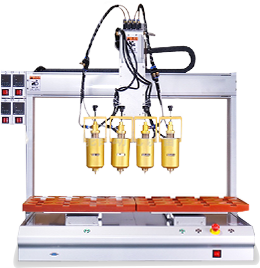
 +86-15993995054
+86-15993995054

 +86-15993995054
+86-15993995054


Toy piggy banks have been a staple in households around the world for generations. These charming and often whimsical containers are more than simple receptacles for loose change; they play a significant role in the financial education of children, serve as decorative items, and hold a special place in our cultural and emotional landscapes. This in - depth exploration will cover the history, types, functions, and the enduring appeal of toy piggy banks.
A Brief History of Toy Piggy Banks
The concept of the piggy bank has a long and fascinating history. The origin of using a pig - shaped container to store money can be traced back to the Middle Ages in Western Europe. At that time, a type of orange - colored clay called "pygg" was commonly used to make various household items, including jars and containers. People would use these pygg jars to save their spare coins. Over time, the word "pygg" became associated with money - saving containers.
As the English language evolved, the pronunciation and spelling of "pygg" changed. By the 18th century, the term "pig" had become more common, and potters began to shape the money - saving jars in the form of pigs. This was likely due to the association of pigs with prosperity and abundance in many cultures. Pigs were seen as valuable livestock, and having a pig - shaped container to hold money may have symbolically represented the growth of one's wealth.
In the United States, the popularity of piggy banks soared in the 20th century. Mass - production techniques made them more affordable and accessible to a wider audience. They became a standard item in children's bedrooms, often given as gifts on birthdays, holidays, or as incentives for good behavior. The designs of piggy banks diversified, with manufacturers creating pigs in various poses, sizes, and colors, as well as incorporating other animal and character - based designs.
Types of Toy Piggy Banks
Traditional Pig - Shaped Piggy Banks
The classic pig - shaped toy piggy bank remains the most recognizable. These banks typically feature a stout body, a curly tail, and a slot on the back or top for inserting coins. Some traditional piggy banks are made of ceramic or porcelain, which gives them an elegant and durable finish. Porcelain piggy banks may be hand - painted with intricate details, such as rosy cheeks, bright eyes, and decorative patterns on their bodies. Ceramic piggy banks, on the other hand, can have a more rustic or textured appearance.
There are also plastic - made traditional piggy banks, which are more lightweight and often more affordable. Plastic piggy banks come in a wide range of colors and may have additional features, such as a removable stopper at the bottom for easy access to the saved money. Some plastic piggy banks are designed to be more child - friendly, with rounded edges and a less breakable construction.
Character - Themed Piggy Banks
Character - themed piggy banks have become increasingly popular, especially among children. These banks are shaped like beloved characters from movies, TV shows, cartoons, or books. For example, there are piggy banks in the shape of Disney characters like Mickey Mouse, Minnie Mouse, or Elsa from "Frozen." These character - themed banks not only serve as a place to save money but also as collectibles. Children are often more motivated to save when their piggy bank features a character they love.
Superhero - themed piggy banks are also a hit. Banks shaped like Superman, Batman, or Wonder Woman appeal to kids who are fans of the superhero genre. These banks may have details that mimic the characters' costumes, such as the iconic "S" on Superman's chest or Batman's cape. Character - themed piggy banks can be made of various materials, including plastic, resin, and even plush fabric in some cases.
Animal - Inspired Piggy Banks (Beyond Pigs)
While pigs are the most common animal associated with piggy banks, there is a wide variety of other animal - inspired designs available. There are elephant - shaped piggy banks, with their long trunks and large ears. Elephants are often seen as symbols of good luck and strength, and an elephant - shaped piggy bank can add a touch of elegance to a child's room. Dog - shaped piggy banks are also popular, especially among children who love dogs. These banks may be designed to look like different breeds, such as a Dalmatian with its spotted coat or a Golden Retriever with its friendly face.
Bird - shaped piggy banks, like owls or penguins, offer a unique and charming option. Owls are associated with wisdom, and a well - designed owl - shaped piggy bank can be both a money - saving tool and a decorative piece that adds a bit of whimsy to the decor. These non - pig animal - inspired piggy banks come in different sizes and materials, allowing for a diverse range of choices for consumers.
Interactive and Electronic Piggy Banks
In recent years, the development of technology has led to the creation of interactive and electronic piggy banks. Some of these banks have LCD screens that display the amount of money saved. They may also have features like sound effects, such as a cheerful "cha - ching" when a coin is inserted or encouraging messages as the savings grow. Interactive piggy banks can be connected to mobile apps, allowing parents to track their child's savings progress and even set savings goals.
There are also piggy banks that use sensors. For example, some banks can detect the type of coin inserted and calculate the total value automatically. Electronic piggy banks can be made to look like traditional pigs or incorporate modern, sleek designs. These high - tech piggy banks are not only fun for children but also provide a more engaging way to teach them about money management in the digital age.
The Functions of Toy Piggy Banks
Financial Education for Children
One of the most important functions of toy piggy banks is to serve as a tool for financial education. For young children, a piggy bank is often their first introduction to the concept of saving money. When a child receives pocket money or a small gift of coins, putting them into the piggy bank helps them understand the idea of setting aside money for a future purpose. As the piggy bank gradually fills up, children can see the physical evidence of their savings growing, which gives them a sense of accomplishment.
Parents can use the piggy bank as a teaching moment. They can explain to their children the difference between needs and wants, and how saving money can help them afford something they really want in the future. For example, if a child wants a new toy, parents can encourage them to save their money in the piggy bank until they have enough to buy it. This teaches children the value of patience, goal - setting, and the importance of making choices with their money.
Decorative and Sentimental Value
Toy piggy banks also have significant decorative and sentimental value. They can add a touch of charm and personality to a child's bedroom, playroom, or any living space. A well - designed piggy bank can be a decorative item in itself, whether it's a colorful, hand - painted ceramic pig or a character - themed bank that matches the room's decor. Piggy banks can also hold sentimental value. They may be given as gifts from grandparents, parents, or other loved ones, and over time, they become a cherished memento of childhood.
Some families may have a tradition of passing down a special piggy bank from one generation to the next. This not only preserves a family heirloom but also continues the tradition of teaching children about saving money. Piggy banks can also be decorated by children themselves, using paints, stickers, or other craft materials. This makes the piggy bank a personalized item that holds even more emotional significance.
Encouraging Good Habits
In addition to financial education, toy piggy banks can encourage other good habits in children. Saving money in a piggy bank requires discipline and consistency. Children learn to resist the temptation to spend their money immediately and instead put it aside for a later time. This discipline can translate into other areas of their lives, such as completing homework on time or practicing a musical instrument regularly.
Piggy banks can also be used as a tool for rewarding good behavior. Parents can offer their children a small amount of money to put in their piggy bank as a reward for doing chores, being kind to others, or achieving a personal goal. This positive reinforcement helps children associate good behavior with positive outcomes and encourages them to continue making good choices.
The Enduring Appeal of Toy Piggy Banks
Despite the rise of digital payments and modern financial technologies, toy piggy banks continue to have a strong appeal. Their simplicity and tangibility make them relatable, especially for children who are just beginning to understand the concept of money. The physical act of inserting a coin into a piggy bank and hearing the satisfying "clink" sound is a tactile and auditory experience that cannot be replicated by digital transactions.
Toy piggy banks also tap into our emotions and nostalgia. For many adults, the sight of a piggy bank can evoke memories of their own childhood, of saving up for a special toy or treat. This emotional connection ensures that piggy banks remain popular as gifts, both for children and for collectors. The wide variety of designs available means that there is a piggy bank to suit every taste and interest, whether it's a classic pig for a traditionalist or a high - tech, interactive bank for a child growing up in the digital age.
In conclusion, toy piggy banks are much more than just containers for coins. They are educational tools, decorative items, and symbols of childhood memories. Their long - standing history, diverse range of types, and multiple functions contribute to their enduring appeal. Whether used to teach a child the value of saving or as a charming addition to a home's decor, the toy piggy bank will likely continue to hold a special place in our lives for generations to come.